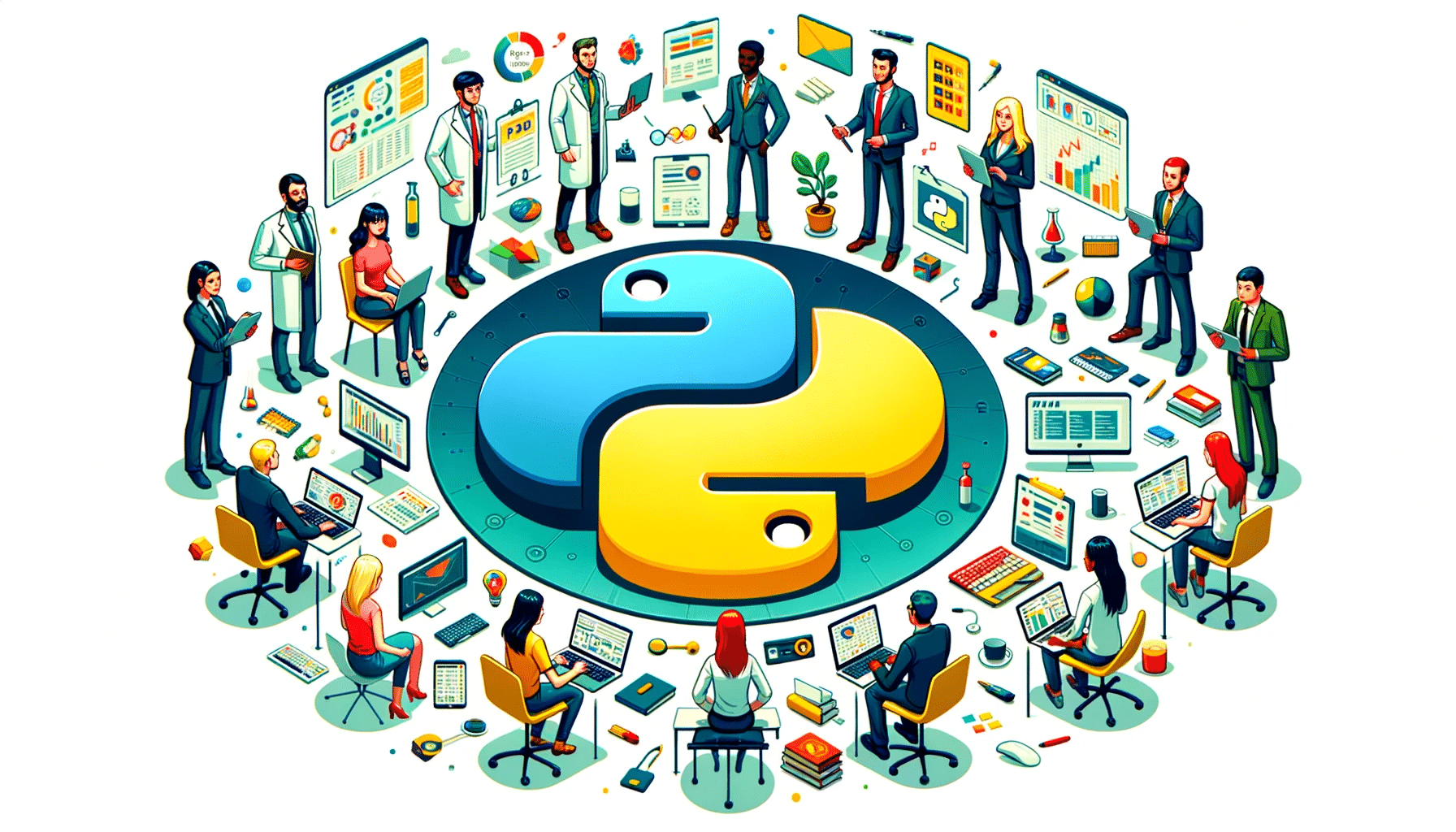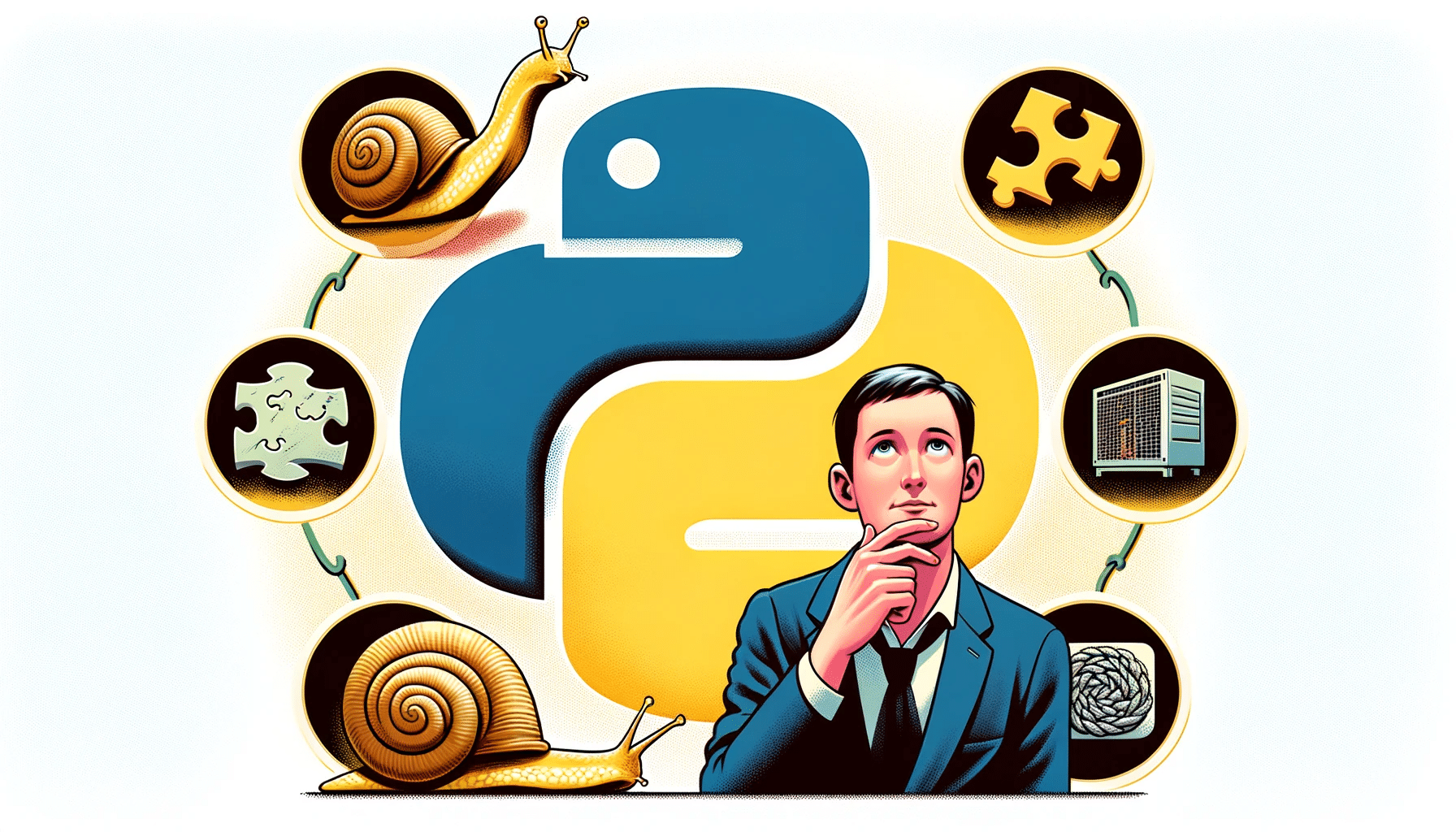Python is the most popular and widely used computer programming language, particularly in the fields of Data Science and Machine Learning. What's more, Python is a cross-platform language that runs on a variety of operating systems, such as Windows, macOS and Linux, making it an ideal choice for developers working on different environments. Find out all you need to know about the Python language: origins, usage, tools, advantages, disadvantages, training.
What is the Python language?

Python is a general-purpose computer programming language. Unlike HTML, CSS or JavaScript, its use is not limited to web development. It can be used for all types of programming and software development.
In particular, it is used for the back-end development of web and mobile applications, and for the development of PC software and applications. It can also be used to write system scripts, to create instructions for a computer system.
Python is also the most popular computer language for Big Data processing, mathematical calculations and Machine Learning. Generally speaking, it is the language of choice for Data Science.
Who invented the Python language?
The Python language was created in 1989 by Guido van Rossum, a Dutch computer scientist. He originally developed Python to improve the ABC programming language, which was used mainly for educational purposes.
Guido van Rossum’s aim was to create a programming language that was easy to read, write and maintain, yet powerful and flexible. He named his new programming language “Python” after the British comedy troupe Monty Python, whom he admired.
Python has grown exponentially in popularity since its creation and has become the programming language of choice for many companies and projects, particularly in the fields of data science, artificial intelligence and web development. Today, Python is an open source programming language supported by a large community of developers worldwide.
💡Related articles:
| Folium: Discover the open source Python library |
| Matplotlib: Master Data Visualization in Python |
| Python Crash Course: Get started |
| Mastering Machine Learning in Python: Data-Driven Success |
One of Python’s main applications is scripting and automation. This language can replace shell scripts, for example, but can also be used to automate interactions with web browsers or application GUIs. Here are some of the other main uses of the Python language:
- It can also be used for system provisioning and configuration through tools such as Ansible or Salt. However, these are far from its only applications.
- Another is application programming. All kinds of applications can be created using this language. Although it doesn’t allow you to generate standard binaries from a script, third-party packages such as cx Freeze and PyInstaller compensate for this weakness.
- Python is also the most widely used language for Data Science and Machine Learning. The vast majority of libraries used for these two data analysis disciplines have Python interfaces. This explains its popularity as a high-level command interface for Machine Learning libraries and other numerical algorithms.
- The language is also used to create Web services and RESTful APIs. Its various native libraries and third-party web frameworks make it possible to program data-driven websites with just a few lines of code.
- Another use case is metaprogramming and code generation. Every element of this language is an object, including modules and libraries. This makes Python a highly efficient code generator.
- You can write applications that handle their own functions, much more extensible than with other languages. It can also be used to drive code generation systems like LLVM to create code in other languages.
Who uses Python?

Python is increasingly used in programming, for two main reasons. Firstly, as mentioned above, it is one of the most versatile and general-purpose languages.
What’s more, despite its versatility, Python remains one of the easiest programming languages to learn. This is because its syntax is very close to that of everyday English. This makes it easy for beginners to understand and start learning.
Despite its simplicity, Python can be used for the most complex projects. It is used, for example, in the fields of AI and Machine Learning.
As a result, this language is used by a wide variety of profiles. Examples include novice programmers, web and mobile application developers, software engineers, data scientists and other data professionals.
What are the advantages of Python?
The Python language has many strong points. Its minimalism means it takes very little time to get started. Its syntax is designed to be readable and straightforward. Beginners can learn to master it easily. As a result, developers spend more time trying to solve problems than dwelling on language complexities.
💡Related articles:
Another advantage is Python’s popularity. Widely used, this language is supported by most OSes, and there are a vast number of compatible libraries and service APIs.
Despite its ease of use, this language can be used for scripting and automation as well as for professional software development. It is therefore extremely versatile.
What’s more, each update of the Python language adds useful new features to keep it in line with modern development practices. As a result, it never becomes obsolete.
What are the drawbacks of Python?

Despite its many strengths, Python is not suitable for all tasks. It is a “high-level” language. It is therefore not suitable for system-level programming.
Nor is it ideal for situations requiring independent cross-platform binaries. A stand-alone application for Windows, macOS and Linux will not be easy to code in Python.
Finally, Python is best avoided for situations where speed is an absolute priority for the application. Better to turn to C and C++ or other languages of the same ilk.
Every function and module is treated as an object by Python. This simplifies the writing of high-level code, but reduces speed.
The dynamism and malleability of objects make optimization difficult, even after compilation. As a result, Python is considerably slower than C/C++ or Java. However, mathematical and statistical operations can be accelerated using libraries such as NumPy and Pandas.
Python also uses a lot of white space. This is sometimes seen as an advantage, but also as a disadvantage. Some people dismiss the language because of this point, but it actually makes the syntax more readable.
The differences between Python 2 and Python 3
Two different versions of Python are available. The older version, Python 2, continues to be widely used, even though it hasn’t received an official update since 2020.
The current version, Python 3, brings important and practical new features. These include new syntax features, better concurrency controls and a more efficient interpreter.
Adoption of Python 3 has been slowed by a lack of compatibility with third-party libraries. Many of them are only supported by Python 2, making it difficult to make the transition. This problem has been resolved in recent years, and Python 3 is now the best choice for new projects.
What is a Python library?
Python’s libraries are one of the main reasons for its success. It’s a vast ecosystem of software developed by third parties. This collection has been enriched and extended over the decades.
Several standard libraries are available, offering modules adapted to the most common programming tasks: networking, asynchronous operations, threading, file access…
Some modules can also handle the high-level programming tasks required by modern applications. These may include reading and writing structured file formats such as JSON and XML, manipulating compressed files, or working with web protocols and data formats.
The default Python distribution also offers a cross-platform GUI library with Tkinter, and an integrated copy of the SQLite 3 database.
In addition to these native libraries, thousands of third-party libraries are available via the Python Package Index (PyPI). It is these libraries that give the language its versatility. Python ?
What Python libraries do I need to know?
There are many Python libraries that can be useful, depending on the field of application and specific needs. However, here are a few of the main Python libraries that are recommended to know:
- NumPy: a library for mathematical and numerical operations on arrays and matrices.
- Pandas: a library for array data manipulation and analysis.
- Matplotlib: a library for creating graphs and data visualizations.
- Scikit-learn: a library for machine learning and data mining.
- TensorFlow: a library for deep learning and neural network model development.
- PyTorch: a library for deep learning and the creation of neural network models.
Beautiful Soup: a library for parsing HTML and XML data. - Requests: a library for sending HTTP requests.
- Flask and Django: frameworks for developing web services. These libraries are very popular and widely used in data science, machine learning, data analysis and web development.

How do I learn Python? What are the best courses?
To learn how to use Python, DataScientest’s training courses will boost your knowledge. This programming language is at the heart of our various programs: Data Scientist, Data Engineer, Data Analyst…
Through these different courses, you’ll not only learn Python, but also all the skills required to work in the field of data science and exercise one of the Big Data professions. Python is the most widely used language for Data Science.
All our training courses adopt an innovative and original Blended Learning approach, combining face-to-face and distance learning. They can be completed in just a few weeks in intensive BootCamp mode, or in Continuing Education.
Designed by professionals, our programs meet the needs of companies and enable learners to enter the job market very quickly.
You know all about the Python language. Discover other must-have Data Science resources, such as the GitHub code hosting service or the Docker containerization platform.










